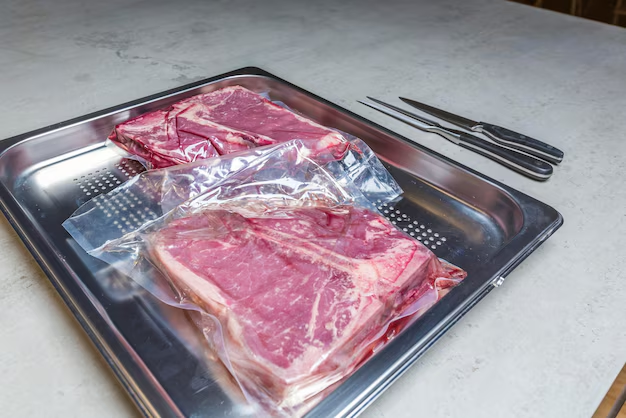How Long Can You Safely Store Cooked Pork in the Refrigerator?
Picture this: you’ve had a fantastic roast pork dinner, and now, you’re left with delightful leftovers. But how long can you really keep that cooked pork in your fridge before it’s time to say goodbye? It's a question many of us ponder, especially when aiming to enjoy our meals safely and minimize food waste. This guide dives deep into the shelf life of cooked pork in your refrigerator while exploring related topics that ensure your culinary journey remains safe and delicious.
Understanding the Shelf Life of Cooked Pork 🥩
How Long Does Cooked Pork Last in the Refrigerator?
A common rule of thumb in food safety is that cooked pork, when stored properly, can last 3 to 4 days in the refrigerator. This timeline allows you to enjoy your leftovers while ensuring they remain safe to eat. However, a few factors can influence this duration, including the initial cooking process, storage conditions, and the type of pork preparation.
The Role of Refrigeration Temperature
The temperature at which cooked pork is stored is crucial. Your refrigerator should be set to 40°F (4°C) or lower to inhibit bacterial growth and keep your food safe. Using a fridge thermometer can help guarantee that your storage environment remains consistently within this safe range.
Best Practices for Storing Cooked Pork
Proper Cooling Techniques
To maximize the longevity of your cooked pork, ensure it cools down correctly:
- Separate into Smaller Portions: This allows the pork to cool more quickly.
- Use Shallow Containers: Shallow dishes promote even cooling, reducing the risk of bacteria forming in the middle.
- Cover and Seal: Use airtight containers or wrap the pork well in foil or plastic wrap to lock in freshness and prevent contamination.
Ensuring a Good Seal 🛡️
Keeping your leftover pork sealed well is not just about preventing air exposure. A proper seal prevents other refrigerator odors from mixing with your pork, maintaining its natural flavor profile.
Signs of Spoiled Cooked Pork
Recognizing Spoilage
Your senses are your first line of defense against spoiled food. Watch out for these signs:
- Discoloration: Fresh pork should retain its natural color. Any green or grayish hues indicate spoilage.
- Unusual Odor: A sour or off smell is a clear sign that it’s time to discard the pork.
- Texture Changes: Stickiness or a slimy film on the surface can indicate bacterial growth.
When in Doubt, Throw It Out 🗑️
If you suspect any change in the pork's safe condition, it's always best to err on the side of caution. Eating spoiled food can lead to foodborne illnesses, a risk not worth taking.
Extending the Lifespan of Cooked Pork
Freezing Cooked Pork
For those looking to extend the life of their cooked pork beyond the refrigerator limit, freezing is a viable option. When stored properly, cooked pork can last 2 to 3 months in the freezer. Follow these tips for optimal freezing:
- Cool It First: Ensure the pork is fully cooled before freezing.
- Air-Tight Freezing: Use freezer bags or heavy-duty foil to protect against freezer burn.
- Label and Date: Always label your containers with the date to keep track of how long they've been stored.
Thawing Frozen Pork
When you’re ready to use your frozen pork, it’s important to thaw it safely. The best practice is to move the pork into the refrigerator, allowing it to thaw gradually. This prevents bacteria growth which might occur if defrosting at room temperature.
Cooking and Reheating Leftover Pork
Ensuring Safe Reheating
When reheating cooked pork, it’s crucial to bring it back to the right temperature to kill any potential bacteria. The recommended internal temperature for reheated pork is 165°F (74°C). Use a food thermometer to ensure optimal safety.
- Even Heating: Use a microwave or oven to make sure your piece of pork is heated evenly throughout.
- No Overcooking: While safety is a priority, overcooking can result in dry, tough meat, detracting from your meal's enjoyment.
Great Ways to Use Leftover Pork
Instead of reheating plain pork, why not incorporate it into new recipes? Here are some delicious ideas:
- Pork Tacos: Slice thin and add to soft tortillas with your favorite toppings.
- Stir Fry: Combine with vegetables and soy sauce for a quick and easy fry-up.
- Pork Salad: Cube the pork and toss with greens for a hearty salad.
Food Safety Considerations 🛡️
Preventing Cross-Contamination
Always maintain kitchen hygiene to prevent cross-contamination:
- Separate Raw and Cooked Foods: Use different cutting boards and utensils for raw products and cooked dishes.
- Regular Cleaning: Clean counters, and tools often to avoid bacteria spread.
Quick Reference: Cooked Pork Safety Tips 📋
To help visualize the guidelines, here’s a quick bullet-point summary:
- 🕒 Refrigerate promptly: Place in the fridge within 2 hours of cooking.
- ❄️ Refrigerator life: 3 to 4 days at 40°F (4°C) or below.
- ⚠️ Freezer life: Up to 2 to 3 months; ensure airtight wrapping.
- 📅 Date your leftovers: Always mark the date when storing.
- 🤢 Watch for spoilage signs: Discoloration, odd smells, sticky texture.
- 🌡️ Reheat wisely: Bring to 165°F (74°C) to ensure safety.
With thorough knowledge of these tips, you can not only make the most of your cooked pork leftovers but also ensure they remain safe and delightful to eat.
In conclusion, while keeping cooked pork in the refrigerator is a practical solution to minimize food waste, understanding how to store it safely is key. By following these guidelines, you'll be well-equipped to enjoy your pork leftovers at their best, while maintaining a safe kitchen environment. Remember, good food safety practices can make cooking and eating an enjoyable and safe experience, reassuring you with every delicious pork bite.
